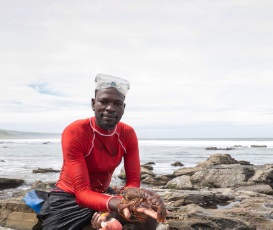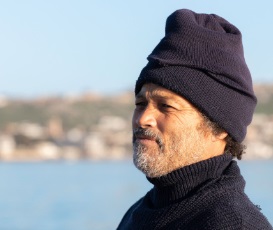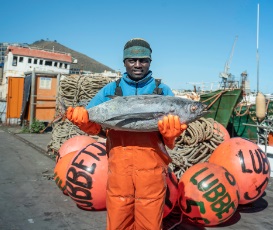
Watch the Squid fishery film

Fishery profile

The Squid jig fishery uses hand lines to catch Cape Hope squid (Loligo reynaudii, known locally as chokka), off the south coast of South Africa.
Based largely along the Eastern Cape coast, the fishery has grown substantially in recent decades. Today, it’s worth an estimated €43 million + a year and is vital to the regional coastal economy. It’s the sector’s third largest employer in South Africa, and directly supports 2,500 people in St Francis Bay alone – half the permanent population. One of the country’s most important seafood exports, ‘chokka’ is largely shipped to Southern Europe, where it is particularly valued for its taste and texture.

“I've been fishing for 37 years give or take. I say fishing is in my blood. We are totally dependent on the stock that’s out there. If the squid live, we live.”
The fishery is widely regarded as well managed. Globally, most squid are caught in trawl nets or with automatic squid jigging machines. The South Africa jig fishery however, uses hand lines. This means the squid are taken one-at-a-time, so there is very little accidental capture of other species or undersized squid, and where this does happen, they can easily be released back into the sea unharmed.
There is limited impact on habitats, because the fishing takes place in the water column, far above the seabed. And it’s more labour intensive than newer methods, making the fishery a crucial source of local employment.
“The commitment to sustainability shown by the Squid jig fishery has been incredible. The fishery adopted voluntary closed seasons during the spawning time of squid to ensure the squid stocks can be replenished sustainably.”
Fishery Improvement Coordinator, WWF SA
Aside from the choice of gear type, the fishery operates two closed seasons to help protect spawning stock, and also manages total effort, limiting both the number of people allowed to fish and the number of days at sea.
Read more about Arthur and the other squid fishers in our article The Cape's Hope.

Fish for Good Improvement Actions
- The fishery is committed to working with the Department of Environment, Forestry and Fisheries to develop well-defined Harvest Control Rules.
- The fishery is undertaking to work with wide range of stakeholders to develop a strategy to minimise the impacts of vessel anchors on benthic habitats.
- The fishery is planning to work with the Department of Environment, Forestry and Fisheries to develop an explicit Fishery Management Plan, with long and short-term objectives centred around an ecosystem approach to fishing.
“To protect the environment and the ocean is part in parcel of our industry. If you don’t look after the ocean or after this squid stock, there can be no industry. That’s a fact. Chokka means everything to this community.”
St Francis Harbour Master
More South Africa Fish For Good stories
Find out more

Fish for Good (project home)
Fish for Good is a four-year project aiming to guide fisheries in Indonesia, Mexico and South Africa on their journey towards sustainability.
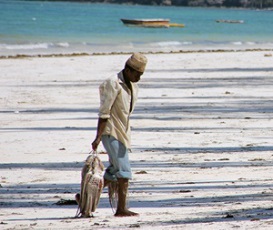
Southwest Indian Ocean Octopus Project (SWIOCeph)
An increased global interest in octopus creates potential for export market opportunities. This project will assist octopus fishing communities in the southwest Indian Ocean regions towards more sustainable practices.
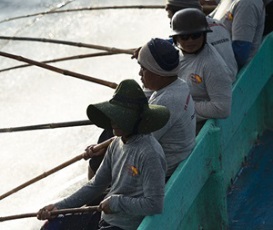
Fish for Good - Indonesia
Indonesia is the world's second largest fish producer. Some stocks are being overfished. Local food security, economy and marine biodiversity are at risk.
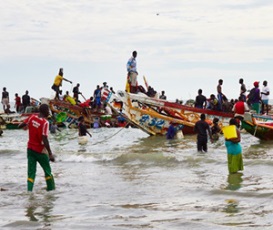
Fishery Improvement Projects (FIPs)
The MSC recognises the important contribution that FIPs can make to improving overall fisheries health and in promoting sustainable seafood. We work to provide technical support and capacity to credible FIPs.


